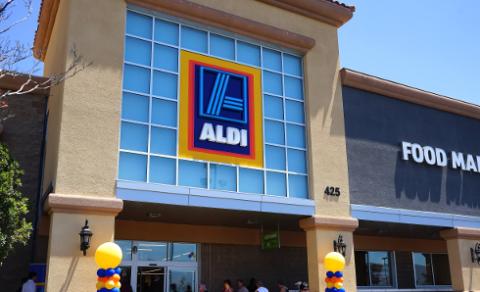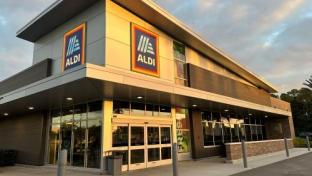Top 50 Grocers: Aldi's Rise Up the List Shows Growing Threat of Discounters
Read the Rest of Our Analysis
(Editors' note: This is part three of a four-part series)
Although Walmart, once more in first place on the Super 50 leaderboard, has long been seen as the low-price leader in any given market in which it operates, causing competing grocers to try attracting customers by any number of differentiation strategies, there’s another format that those already embattled retailers — and maybe even the Bentonville Behemoth itself — will need to reckon with: the deep discounter.
As embodied by Aldi — now at No. 9 in Progressive Grocer’s ranking (see the charts at the end of this piece), up from the tenth slot last year and 13th place in 2016 — Aldi Nord banner Trader Joe’s, currently in 10th position; and newcomer to the U.S. market Lidl, not yet in the ranking, the deep-discount business model, honed over time in Europe, relies on an assortment largely made up of premium private-brand products sold at often rock-bottom prices.
Download the Complete Rankings
Indeed, a price comparison test conducted in 2017 by Kantar Retail of 15 private label items delivered a ring that was 23 percent cheaper at Lidl than at Walmart, with the former enjoying a double-digit percentage price advantage over the latter on 11 of the products.
“With limited-assortment retailers like Lidl and Aldi already driving growth in private label, particularly among consumers who are both penny-wise and brand agnostic, expect more pressure across all retailers to ramp up their exclusive offerings,” wrote PG Editorial Director Jim Dudlicek after a visit last summer to the very same Greenville, S.C., Lidl store where Kantar’s price comparison took place. “Traditional retailers like Kroger already have been enhancing their private label offerings as well as investing in price reduction to better compete against disruptors like Lidl and Amazon.”
Further, a study released earlier this year from the University of North Carolina (UNC) Kenan-Flagler Business School found that retailers near U.S. Lidl stores set their prices for key staple products up to 55 percent lower than in markets where Lidl isn’t present — a competitive price-cutting effect more than three times stronger than that of Walmart’s entry into a new market. The independent study, commissioned by Lidl US, encompassed 48 grocery products.

“The level of competitive pressure Lidl is exerting on leading retailers to drop their prices in these markets is unprecedented,” affirmed UNC Kenan-Flagler Associate Professor of Marketing Katrijn Gielens, who led the study. While that means great savings all around for shoppers in those markets, it further squeezes grocers’ already razor-thin margins as they strive to offer comparable pricing.
Despite these wins, the format isn’t a guaranteed slam-dunk, especially in the United States, where Lidl is still finding its feet. The CEO of the chain’s parent company recently admitted to several “failures,” among them poor site selection, locations too large and too expensive to operate, and a lack of insight into Americans’ product preferences.
Still, the company is determined to right its wrongs, and with old-pro Aldi set to expand its quietly successful formula to 2,500 stores nationwide by the end of 2022, grocers going head to head with either of these players — or Trader Joe’s, for that matter — need to develop their own deep-discounting chops to better compete.
| 2018 Rank | 2017 Rank | Company | Fiscal Year-End Sales (000) |
| 1 | 1 | Walmart Inc. | $159,809,000 |
| 2 | 2 | The Kroger Co. | $79,240,200 |
| 3 | 3 | Albertsons Cos. Inc. | $61,261,200 |
| 4 | 4 | Ahold Delhaize USA | $46,119,320 |
| 5 | 5 | Publix Super Markets Inc. | $28,535,000 |
| 6 | 6 | H.E. Butt Grocery Co. | $16,451,500 |
| 7 | 8 | Wakefern Food Corp. (*Aggregate of ShopRite, Price Rite and The Fresh Grocer banners) | $16,300,000 |
| 8 | 9 | Amazon (as Whole Foods Market) | $15,655,900 |
| 9 | 10 | Aldi Inc. | $14,664,780 |
| 10 | 12 | Trader Joe's Co. | $13,000,000 |




